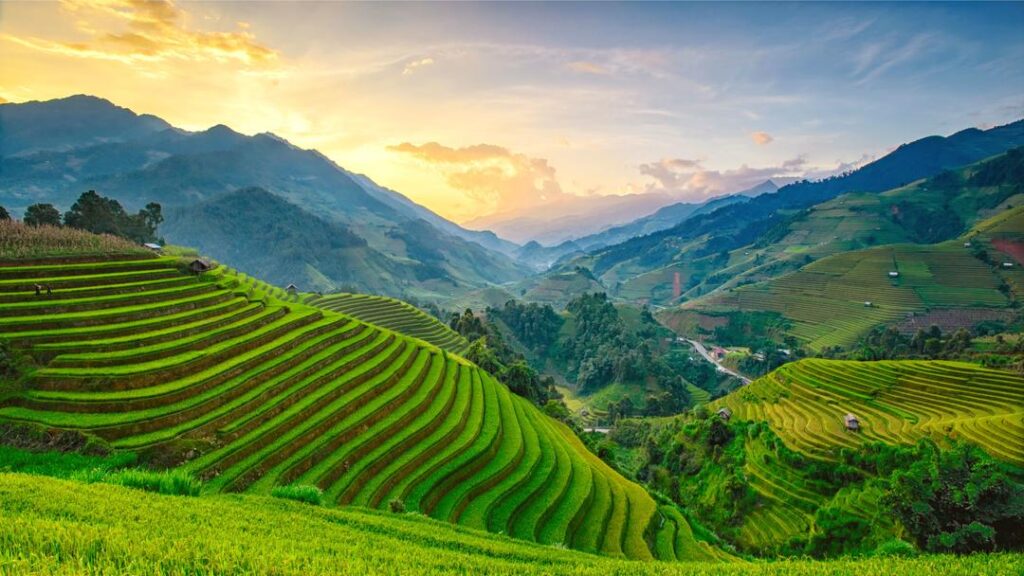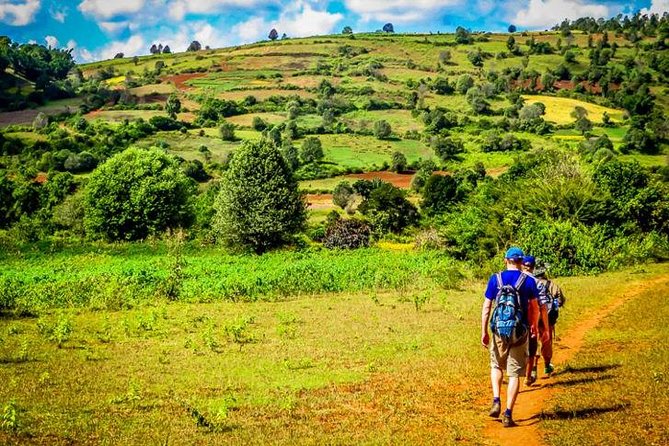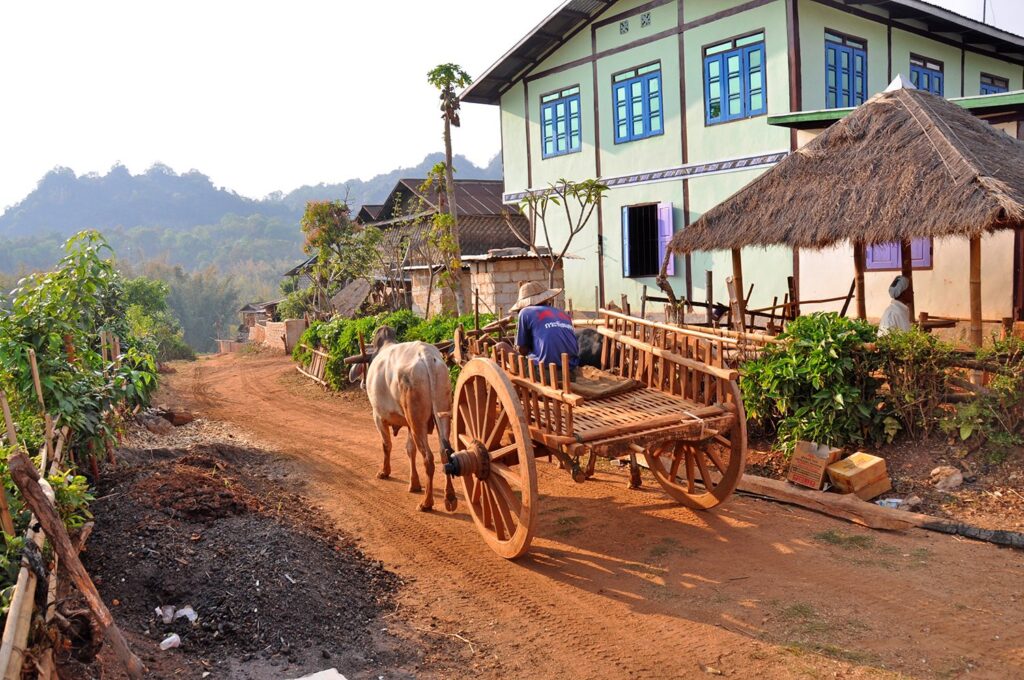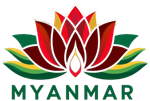


Kalaw: A Trekker’s Gateway to Inle Lake
Kalaw is synonymous with trekking. While there are many routes, the most iconic journey is the multi-day trek to Inle Lake, usually 2–3 days of walking through hill villages, farms, bamboo forests, and valleys. It is not a technical hike—it is a cultural journey on foot.
What makes the trek special?
Changing scenery: pine forests ➜ farmland ➜ bamboo groves ➜ wetlands near Inle.
Village homestays: evenings spent in simple homes, eating steaming Shan noodles or lentil soup.
Community guides: local trekking guides share stories and help you understand customs and agricultural cycles.
Trekking is sustainable tourism at its best. You contribute to village incomes directly, bypassing mass-tourism models. Many travelers remember Kalaw not just for landscapes but for human connections formed along the trail.
Life in the Mountains: Agriculture and Sustainability
Kalaw is surrounded by fertile land. The high altitude and mild weather allow villagers to cultivate a range of crops:
Tea
Ginger
Avocado
Lettuce and greens
Tomatoes
Strawberries
Small roadside stalls sell seasonal produce harvested that very morning. Much of Myanmar’s vegetable supply to the plains comes from highland areas like this.
Tea is the soul of these hills. Myanmar is one of the rare countries where tea is eaten, not just drunk. Ask locals about laphet—fermented tea leaves served with peanuts, sesame seeds, garlic, and crunchy beans. In Kalaw, the laphet tastes especially fresh.
Markets: Where Cultures Meet
Kalaw’s central market is one of the highlights of town life. Arrive early—before 9 a.m.—to experience it at full force. Vendors from surrounding villages descend with baskets of produce on motorbikes, trucks, or even on foot.
You’ll find:
Fresh mountain greens
Homemade pickles
Millet, rice, and beans
Handmade baskets and textiles
Bamboo shoots
Fermented tea
Traditional medicines
The market is not built for tourists. It exists for local trade, and this authenticity makes it a photographer’s paradise.
Colonial Footprints and Historical Echoes
Despite being a small town, Kalaw has a fascinating layered history.
British Hill Station Era
The British established Kalaw in the 1890s as a hill station, drawn by its cool weather. Administrators, army officers, and missionaries built rail lines, churches, and homes. The architecture still lingers—although many structures have been repurposed or weathered with age.
Indian and Nepali Influence
Kalaw later became home to workers from India and Nepal. Their legacy remains visible in:
Hindu temples
Nepali restaurants
Street vendors offering paratha
Families tracing roots back to the early 20th century
This multicultural foundation differentiates Kalaw from mono-ethnic rural Myanmar towns and gives it a cosmopolitan edge.
Spiritual Landmarks and Quiet Corners
Beyond trekking and markets, Kalaw is dotted with tranquil religious spaces.
Thein Taung Monastery
Perched overlooking the town, the monastery can be reached by a staircase from the marketplace area. The view from the top is peaceful—terracotta rooftops, pine trees, and the soft buzz of everyday life below.
Hsu Taung Pye Pagoda
Golden spires rise modestly compared to Yangon’s Shwedagon, but the charm is intimate. You may see monks sweeping leaves, or families lighting incense during full moon days.
Bamboo Buddha Caves
A short trip from town reveals caves filled with hundreds of small Buddha statues. The murmur of prayer echoes off limestone walls. It feels ancient, untouched, and spiritual.
Food Scene: Simple and Soulful
Kalaw is not a culinary capital—but it is full of comforting food that tastes of the mountains.
Shan Cuisine
Shan noodles (shan khao swè) are light and fragrant: rice noodles in clear broth topped with chicken or pork, pickles, and chili oil.
Nepalese and Indian Curries
Because of Kalaw’s history, you will find authentic dal, chapati, momos, and curry plates that rival many big cities.
Fresh Produce and Healthy Meals
Restaurants use local vegetables—stir-fried pumpkin leaves, ginger salads, tofu, and steamed greens.
Food here is honest. Nothing flashy. Just warm meals after long hikes.
Best Time to Visit Kalaw
Kalaw is pleasant year-round, but seasons influence the experience:
November–February (Cool Dry)
The best trekking weather. Crisp mornings, sunny afternoons, and cold nights.March–May (Warm Dry)
Still comfortable because of altitude. Trails are drier, landscapes browner.June–October (Monsoon)
Trails become muddy, but forests turn vibrant green. Misty mornings are magical.
Unlike Myanmar’s lowlands, Kalaw never becomes unbearably hot.
Practical Tips for Travelers
Footwear: sturdy trekking shoes or sports shoes.
Clothing layers: mornings and nights can be cold even in summer.
Cash: Smaller villages do not accept cards.
Respect local customs: ask before photographing villagers.
Trek responsibly: use local guides and avoid litter.
Why Kalaw Leaves a Lasting Impression
Kalaw is rarely dramatic. It whispers rather than shouts. There are no giant temples or flashy skylines. Instead, the town offers simple gifts—clear air, soft hills, tea leaves, grandmothers weaving baskets, monks chanting in quiet temples.
It is the rare destination where the journey is the experience, not a checklist of sights. Travelers often arrive for one night and stay for three. They leave with memories not of monuments, but of moments: sharing tea with a family, watching fog lift over farmland, or sitting by a hearth in a village homestay.
Kalaw teaches you to slow down, breathe deeply, and appreciate the rhythms of rural Myanmar.
Frequently Asked Questions (FAQ) — Kalaw, Myanmar
1. Where is Kalaw located?
Kalaw is a hill town in southern Shan State, Myanmar. It sits at an elevation of around 1,320 meters and lies west of the famous Inle Lake region.
2. What is Kalaw known for?
Kalaw is Myanmar’s premier trekking destination, especially the multi-day hike from Kalaw to Inle Lake. It is also known for its cool climate, pine forests, ethnic villages, tea farms, and colonial-era architecture.
3. Is Kalaw good for beginners in trekking?
Yes. Trails around Kalaw are generally moderate, with gentle hills and well-marked paths. Most treks involve 6–15 km per day, and local guides adjust routes to suit beginner or experienced hikers.
4. How long is the Kalaw to Inle Lake trek?
The classic trek takes 2 to 3 days, depending on pace and starting point. The route includes village homestays, farmland views, bamboo forests, and a final lakeside arrival at Inle.
5. When is the best time to visit Kalaw?
The ideal months are:
November to February — cool, dry, and perfect for trekking
March to May — warmer but still comfortable
June to October — rainy, green landscapes, misty mornings (less ideal for trekking)
6. What is the weather like in Kalaw?
Kalaw has a refreshing highland climate:
Cool mornings and evenings year-round
Average temperatures between 10°C and 25°C
Nights can be cold in December–January
7. Which ethnic communities live around Kalaw?
Villages around Kalaw are home to Pa-O, Danu, Taung Yo, Shan, and Palaung communities. Trekking routes allow respectful visits to their farms, tea plantations, and traditional homes.
8. Do I need a guide to trek in Kalaw?
It is strongly recommended. Local guides know safe trails, weather conditions, customs, and can arrange food and homestays. Treks also directly support local communities.
9. Are there homestays in Kalaw?
Yes. Homestays are common in surrounding villages during multi-day treks. They are simple, comfortable, and culturally immersive—expect shared meals, floor bedding, and warm hospitality.
10. How do I reach Kalaw?
Bus from Yangon, Mandalay, or Bagan
Train to Kalaw Station (scenic mountain route)
Car or taxi from Heho Airport (approx. 1 hour drive)
11. What food is Kalaw known for?
Kalaw combines Shan dishes with Nepalese and Indian influence. Popular meals include Shan noodles, momos, dal, chapati, ginger salads, and seasonal mountain vegetables.
12. Are there ATMs or card payments?
ATMs exist in town, but many trekking villages do not accept cards. Bring enough cash for guides, meals, and souvenirs.
13. Is Kalaw safe?
Kalaw is generally peaceful and considered safe for tourists. Use normal travel awareness: respect local traditions, trek with certified guides, and avoid wandering alone at night in remote villages.
